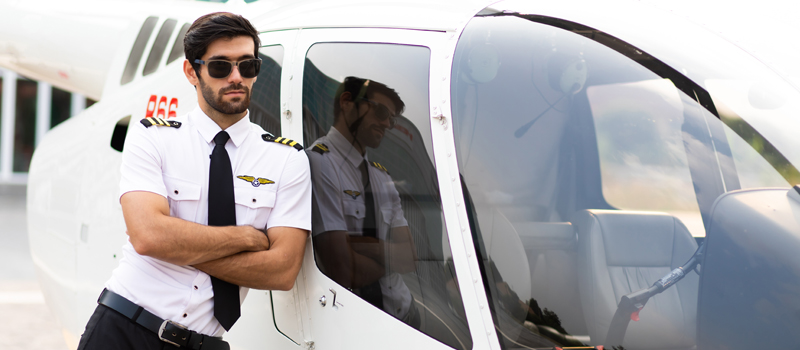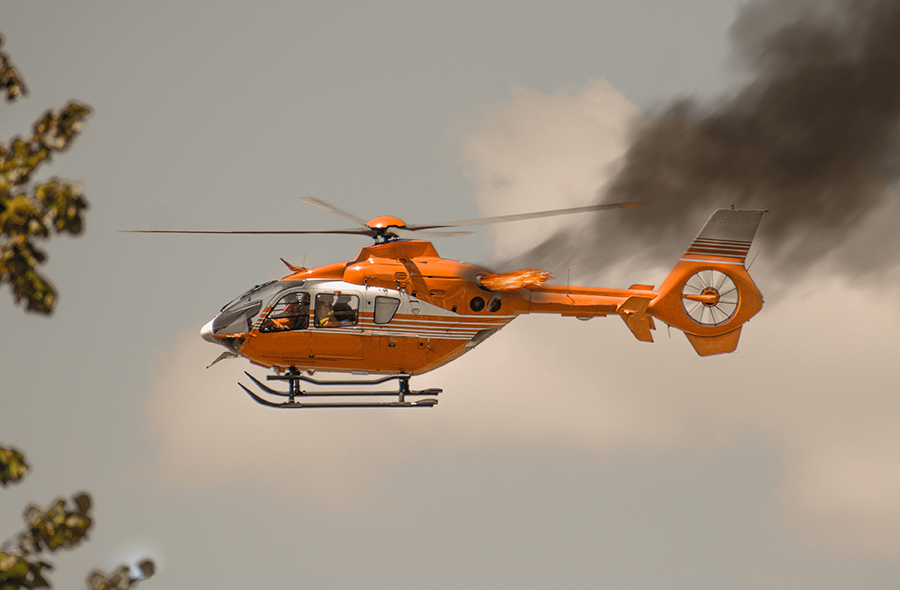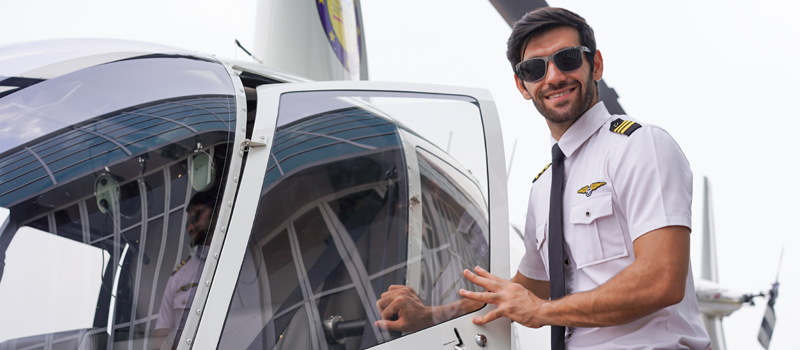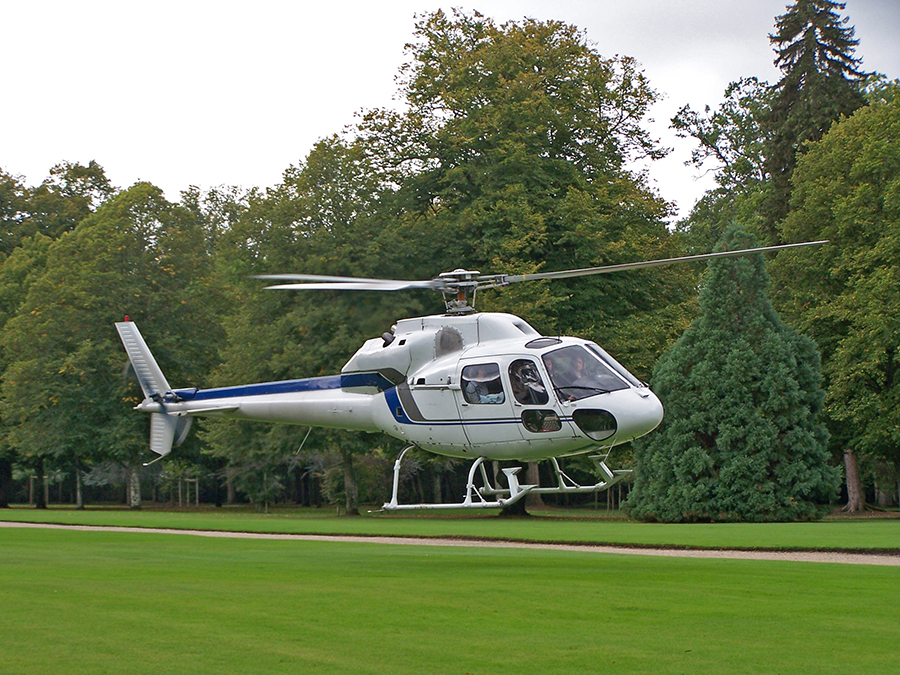-
Do you want to fly for fun, or as a career?
-
FAA eligibility requirements
-
Getting a student pilot certificate and medical certificate
-
Doing Your Ground School
-
Requirements for each license
- Private Pilot Helicopter License
- Commercial Pilot Helicopter License
-
Commercial Flight Instructor Rating
-
Helicopter Instrument Rating
-
Airline Transport Pilot Helicopter License
- Pass your practical test
-
Other Important Points
- How much does it all cost?
- How long does it all take?
- How much can you earn?
-
Conclusion
A large number of people dream of learning to fly a helicopter, particularly when they look up and see one flying overhead. But for many actually doing this seems quite impossible. They think it is too difficult, and also very expensive.
It must be said – helicopter training is not easy, and it does cost significantly more than fixed-wing flying. But it is certainly possible if you are determined and really want to do it.
So here is a step-by-step guide to becoming a qualified helicopter pilot. We will first cover learning to fly for fun. Then we will look at maybe taking things further and becoming a professional helicopter pilot.
Do you want to fly for fun, or as a career?
If you only want to fly as a hobby, then you will just need a Private Pilot’s License for Helicopters. This will allow you to fly a helicopter by yourself for recreational purposes. It is great fun, and it will open the door to a whole new world for you.
However, if you want to fly helicopters for a living, you will need to get a Commercial Helicopter License, and maybe eventually an Airline Transport Helicopter Pilot’s License. And if you want to teach others, you will also have to get a Helicopter Instructor’s Certificate.
But there is no need to make that decision right now. Whatever you plan to do in the future, you need to get a Private Helicopter Pilot’s License first.
So first things first; here is our step-by-step guide which will take you through the whole process just as far as you want to go.
FAA eligibility requirements
These are the requirements you need to fulfill before you can actually train for your License for helicopters. As you might expect, there are different requirements for private licenses and commercial ones.
For a private helicopter pilot license, you must:
- Be at least 17 years old
- Be fluent at reading, writing, and speaking English
- Be able to provide proof of identity
- Be able to qualify for and obtain a 3rdclass FAA medical certificate. It is a good idea to get this as soon as possible, in case you discover any health problems which you did not know about. See below for details about getting this.
For a commercial helicopter pilot license, you must:
- Be at least 18 years old
- Be fluent at reading, writing, and speaking English
- Be able to provide proof of identity
- Be able to qualify for and obtain a 2ndclass FAA medical certificate The same warning applies as above – get it as soon as possible.
- Have already earned a private helicopter license
Getting a student pilot certificate and medical certificate
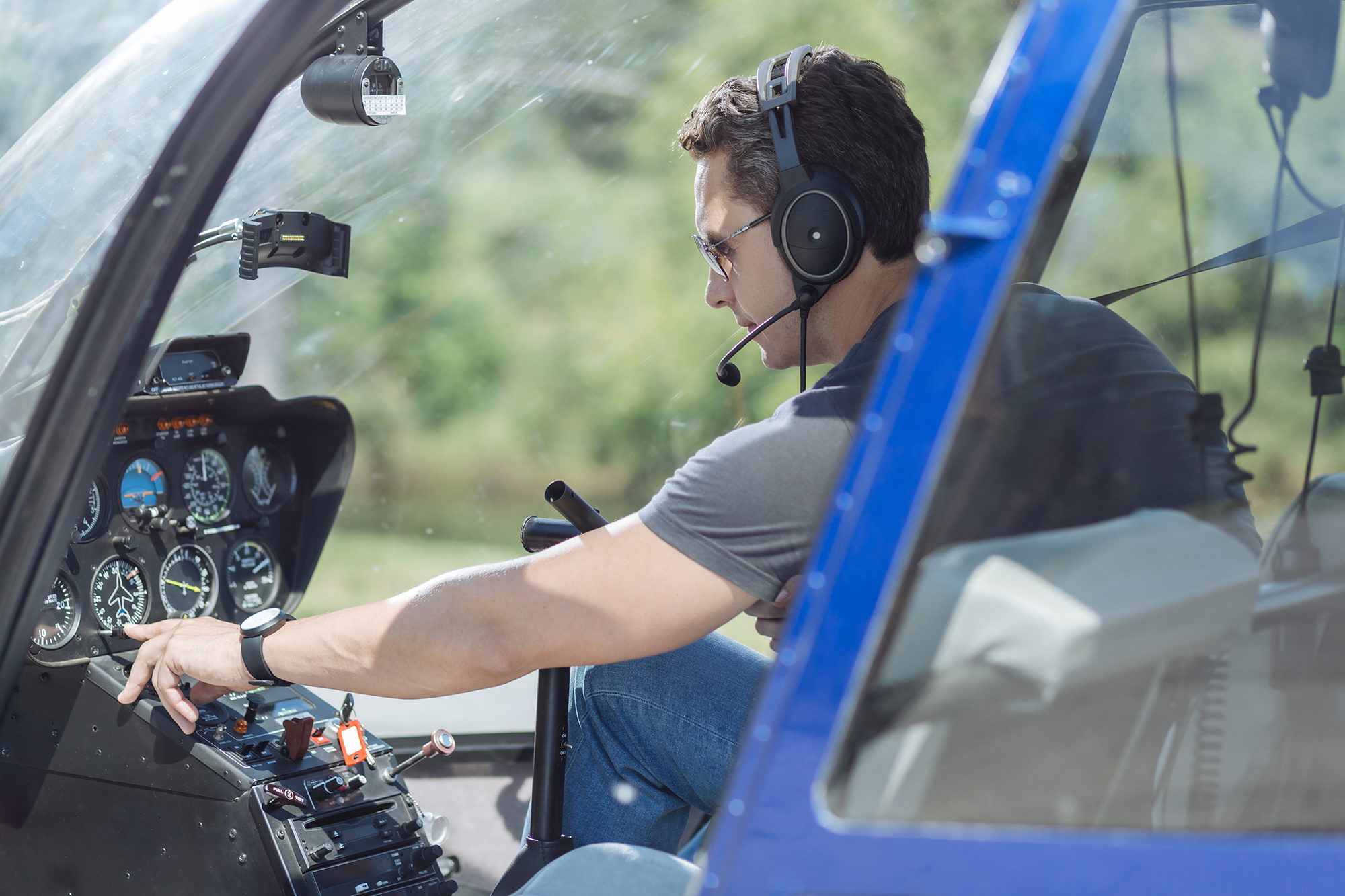
You need to apply for these before getting any kind of pilot’s license, whether fixed-wing or rotary. Of course, if you are already a fixed-wing pilot you may have both of these. If this is the case, then you just need to check that your license is valid and your medical is up to date.
However, if you are starting from scratch and you don’t have either of these, then you will need to get them as soon as possible. You don’t need a student pilot certificate in order to start your flying lessons, but you do need to have applied for one.
The application process includes filling out a form, getting an authorized individual to verify your identity and submit your application for you, and passing a medical certification exam. You can fill out the application form online, or complete a paper form if you prefer.
You then have to submit your application, and finally, get an examination by an Aviation Medical Examiner. You need to have completed all this and obtained the certificates prior to your Fist Solo, so it is good to start the process as soon as you can. It would be disappointing to sail through your early training, be ready to go solo, but not be able to do so because you did not have the required paperwork.
Doing Your Ground School
Your next step is to obtain your ‘ground’ or written instruction and pass the relevant test. People are often surprised by how much theoretical work there is before you can get a pilot’s license, but there is a great deal to learn. You can do ground school before you start to fly, or at the same time, alternating the two types of training.
This is when you will be introduced to subjects such as helicopter systems and operations, emergency procedures, navigation, regulations, chart reading, meteorology, and more. If you are a fixed-wing pilot, you will have already covered some of these, which will be very useful for you. But some of the information will be specific to helicopters.
You can study on your own, although it is not really recommended. Or you can learn from a helicopter instructor face-to-face, or do an online curse. The latter is likely to be significantly cheaper and is recommended.
Once they feel you are ready, your flight instructor will sign you off and you can take your written knowledge test.
Requirements for each license
Let us take a look now at what you need to do in terms of flight training, for each license.
We will start with the Private Pilot’s Helicopter License, as this is necessary for everyone, and is needed before doing any type of commercial license.
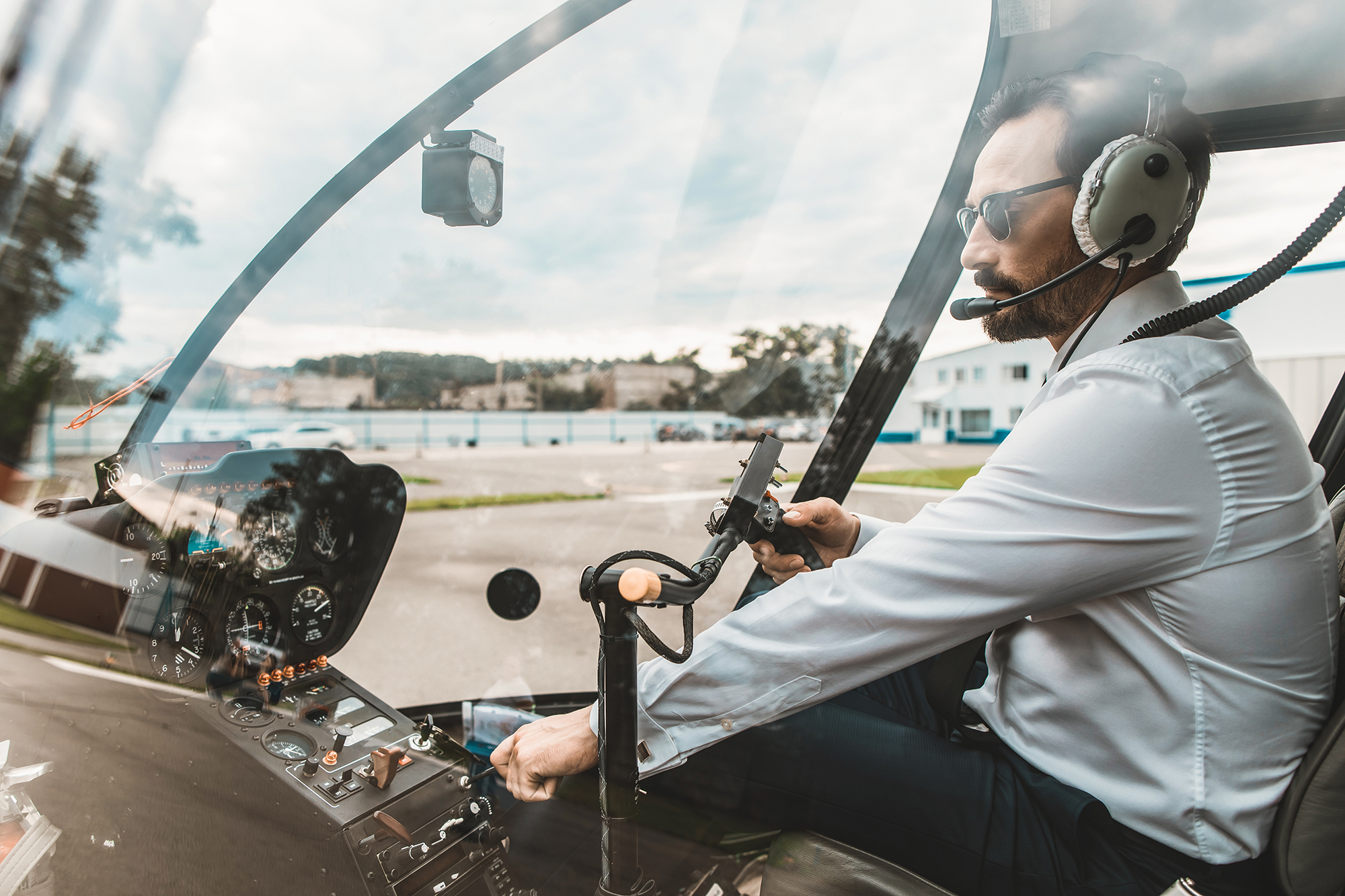
Remember, the hours given here are a legal minimum Most students take more than the minimum number of hours, sometimes much more. Even if you already have a fixed-wing license, you may need more than the minimum hours – I certainly did. For helicopter flying is very different from fixed-wing flying, particularly when it comes to hovering and related exercises. So try not to worry if it takes you a long time, and it is a good idea to ensure you can afford to pay for extra lessons if you need them.
Private Pilot Helicopter License
As already stated, this is the license you will need for pleasure flying, and the first step on the road to getting any kind of commercial license. It will allow you to hire a helicopter and fly for your own enjoyment, or even buy one and fly it for pleasure. It also allows you to fly a helicopter for charitable events. But it does not allow you to make money as a helicopter pilot.
Here are the FAA requirements for obtaining your Private Pilot Helicopter License…
- 40 hours of total flight time
- 20 hours of flight training with an authorized instructor
- 3 hours of cross country flight in a helicopter
- 3 hours of night flight training
- One cross country flight of at least 50 nautical miles (at night)
- 10 take-offs and 10 landings
- 3 hours of flight training preparing specifically for the practical test
- 10 hours of solo flight time in a helicopter
- 3 hours of solo cross country flight time
- One solo cross country flight of at least 75 nautical miles total distance, with landings on at least 3 points, and one segment of the flight being at least 25 nautical miles between take-off and landing
- 3 take-offs and 3 landings to a full stop at an airport with an operating control tower
- To pass a written test
- To pass an oral test
- To pass a practice flight test
This might sound somewhat daunting. However, if you follow a helicopter flying course at a flying school, you will definitely cover all of these in your training, although not necessarily in 40 hours, as we have already stated. It’s really not as arduous as it sounds!
Commercial Pilot Helicopter License
If you want to go on from just flying for pleasure, this is the next type of helicopter pilot license. In addition to allowing you to do everything you could with a private pilot license, it will also allow you to work and make money as a helicopter pilot. This is the license you will want if you plan on making a career of your helicopter training.
The training for this is more detailed and harder than the training for a private pilot’s helicopter license. The reason for this is that you will need to meet very high training and safety standards to fly professionally. But although it is a large commitment, it is really not beyond anyone’s reach if they put in the time and effort needed.
Here are the requirements for the Commercial Helicopter Pilot License:
- Hold a current private pilot helicopter license
- Log at least 150 hours of flight time as a pilot
- Of the above 150 hours, 100 hours must be in a helicopter. The remainder can be in a fixed-wing aircraft if you hold a license for flying airplanes too.
- In addition, you need to fulfill all requirements around night flight, a pilot in command training, and cross country flight
- Pass a written test
- Pass an oral test
- Pass a practice test flight
Once you have this license, you have quite a lot of choice as to what to do next. You may want to fly commercially. Or you may decide to get further qualifications, as detailed here…
Commercial Flight Instructor Rating
This is technically not a license but is an additional rating added on to your Commercial Helicopter Pilot’s License. It allows you to teach others how to fly a helicopter.
This may be a career you would like or just something you want to do temporarily. But it is well worth considering if you get on well with people. It can be an excellent career, and also great fun – I speak from experience.
Here are the requirements for this rating:
- Hold a current commercial helicopter pilot license
- Log at least 15 hours as pilot-in-command in helicopters
- Pass a written test
- Pass an oral test
- Pass a practical flight test
After meeting all the above requirements, you will be able to make money as a helicopter pilot instructor. Instructors are always in demand, and it may be much easier for you to find work if you have this rating, rather than having to compete with all the other people who hold a commercial pilot helicopter license for other jobs.
Helicopter Instrument Rating
This is also a rating rather than an actual license. Like the Instructor’s Rating, it is something which could be very useful for you to have, even if, again, it is not absolutely necessary. This rating allows you to fly in more weather conditions and in different situations.
The requirements for the helicopter instrument rating are:
- Hold at least a Private Helicopter Pilot License or be in training to earn one
- Log 50 hours of cross country flight as pilot in command (at least 10 in helicopters)
- Log 40 hours of flight by reference to instruments only
- 20 hours of the above time may be logged with the use of a flight simulator
- Pass an oral test
- Pass a written test
- Pass the practical test flight
Once you’ve earned this rating, you’ll be able to fly in some difficult flying conditions. And if you wish to go still further, you’ll be ready for what many consider to be the greatest achievement for a helicopter pilot…
Airline Transport Pilot Helicopter License
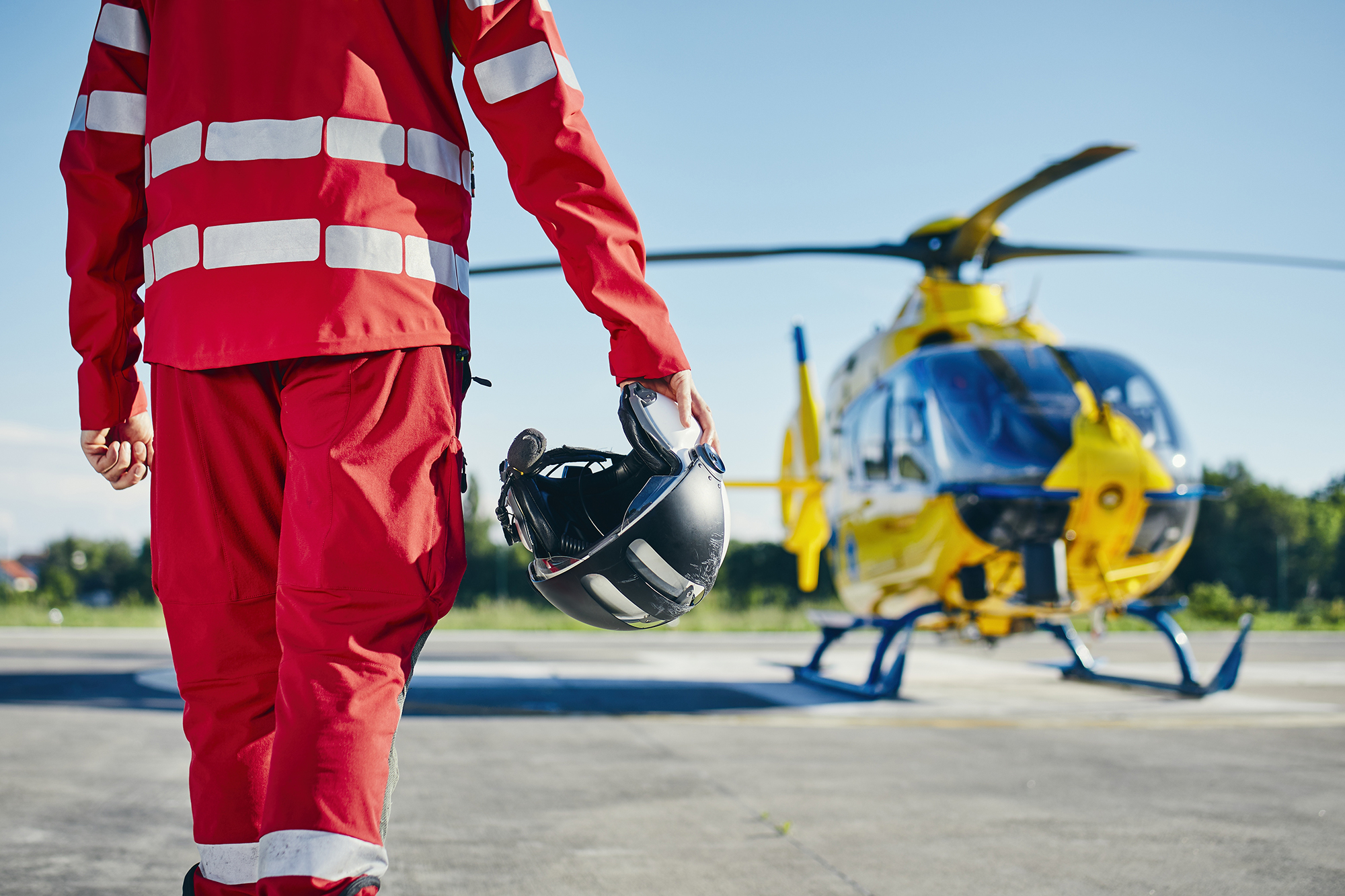
The purpose of the Airline Transport Pilots License or ATP (H) course is to train helicopter pilots to the level of proficiency necessary to fly passengers within commercial flight standards. Once you have acquired this license, you will be able to fly passengers as a helicopter pilot and be paid to do so. The training and flight hours required are significant since you’ll be responsible for not only yourself but also your passengers. This is obviously quite a responsibility!
The requirements to earn an Airline Transport Pilot Helicopter License are:
- Hold a current Commercial Helicopter Pilot License with instrument rating
- Be at least 23 years old
- Log at least 1200 hours of pilot flight time
- Those 1200 hours must include 500 hours of cross-country time, 100 hours of night flying, and 75 hours of instrument time
- Meet additional flight requirements as regulations require
- Pass a written test
- Pass an oral test
- Pass a practical flight test
So having gained whatever licenses and ratings you need, what next?
Pass your practical test
Once your instructor signs you off from whichever course you have done, you will be ready to take your practical test or ‘check ride’. Your instructor will have helped you prepare for both the oral and hands-on portions of this test, so you really don’t need to worry about it.
So now…all you have to do is pass your test, file your paperwork and you’re a real-life helicopter pilot!
Other Important Points
How much does it all cost?
As you can imagine, and as already mentioned, becoming a helicopter pilot is not cheap. Below is a rough breakdown of how much you can expect to spend to pay to learn to fly helicopters.
Keep in mind that the prices listed below are only estimates. They can differ significantly, based on many factors, including prices set by individual schools, the region you’re in, types of training, and more. This is only a starting point, and you should strongly consider asking more detailed questions when you visit flight schools and take a test flight. And it might be worth shopping around to compare prices at different schools too. But if you do this, check other factors too. When buying flight training, like anything else, a low price is not everything!
The prices here include the cost of ground instruction, testing, aircraft rental, and flight training.
| Private Pilot Helicopter License | $12,000 – $15,000 |
| Commercial Pilot Helicopter License | $30,000 – $35,000 |
| Flight Instructor Rating | $10,000 – $15,000 |
| Instrument Rating | $11,00 – $14,000 |
| Helicopter Air Transport License | Cost of required flight time – see below. |
For the Helicopter Air Transport License, it is really a matter of getting the flight time you need and then doing the tests. The flight time could cost as much as $500 per hour. However, most people work as commercial pilots or instructors, to get the required flight time while they are working, rather than paying for it.
How long does it all take?
The time it takes each student to earn their helicopter license varies because it depends on so many factors. The two main factors are:
- How much time do you have to dedicate to flight training
- What level of license you are looking to obtain
If you have other responsibilities in your life such as another job and/or a family, it can take quite a long time to get some of these licenses; often months if not years. The best advice I can give you is to start with the Private Helicopter Pilot License and take your time, dedicating as much time to it as you can and learning as you go along. There is no point in stressing yourself out because you cannot do it as quickly as some other people.
However, if you have time, and practice a lot, you can earn your Private Helicopter Pilot License in as little as a few months, perhaps even a matter of weeks.
If your goal is to go all the way to the highest rating and become an air transport pilot, keep in mind that most of the students in these programs are already either flight instructors or commercial helicopter pilots. These jobs allow you to gain valuable flight time and experience while earning money instead of spending it.
So if you are planning on being a commercial helicopter pilot, try not to be in a hurry. Taking it slowly and steadily is probably your best bet.
How much can you earn?
With a new commercial license and minimal flight time, your best-paying starter job is likely to be as a flight instructor. This is why it makes sense to get your instructor’s rating along with your commercial license. The average pay for a helicopter flight instructor is around $30,000 a year.
A mid-range helicopter pilot salary is usually attainable once you’ve logged over 1,000 hours of flight time. Tour pilot positions pay around $40,000-$50,000. And if you manage to land an emergency services role, your salary will be closer to $50,00 – $90,000. But competition for these can be fierce!
Firefighting helicopter pilots are well-paid seasonal employees earning an average of $75,000 per fire season.
Finally, if you hit the jackpot and get a job as a pilot for business executives, VIPs or with an offshore oil rig, and you can make $100,000+. But competition for these jobs is very high, and don’t expect to obtain one without a great deal of experience.
Conclusion
Learning to fly a helicopter is a challenging but rewarding adventure. The flying course may be difficult, but it is also very enjoyable. There is a certain level of satisfaction gained from an accomplishment like this, something that you can’t quite get with anything else. It might take a long time and require a lot of hard work, but in the end, if you love helicopter flying, it will be well worth it.
If you are interested in taking the first step and finding out if learning to fly a helicopter is for you, I would recommend you get an introductory flight or discovery flight scheduled at your nearest flight school, or at the school, you feel most comfortable with. Don’t try too hard to do well on this flight; just relax, keep an open mind, and enjoy yourself.
Who knows – by the end of this first flight, you might have found a hobby you’ll be glued to for the rest of your life, or even a whole new career. That’s what some of us did.
